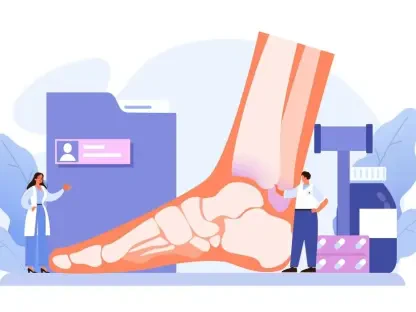The field of health informatics technology is rapidly evolving, with significant implications for salary trends and career growth. As healthcare systems increasingly rely on digital health records and advanced technology, the demand for skilled health informatics technologists continues to rise. This article provides an in-depth analysis of salary trends, factors influencing earnings, and strategies for career advancement in this dynamic field.
Overview of Health Informatics Technologists’ Salary
Median Salary and Variations
The Bureau of Labor Statistics (BLS) reported a median annual salary of $62,990 for health informatics technologists in May 2023. This figure represents the midpoint of earnings, with the lowest 10 percent earning less than $38,310 and the highest 10 percent earning more than $107,650. Payscale.com offers a slightly different perspective, reporting an average annual salary of $45,586 or $17.13 per hour. These variations highlight the diverse earning potential within the field.
Such discrepancies can arise due to differing methodologies in how salary data is collected and reported. While the BLS provides a broad national perspective, Payscale.com can reflect user-reported data which may incorporate a range of work environments and roles within the broad category of health informatics technologists. The median figure from the BLS suggests a stable and rewarding career, though it’s essential to consider these numbers in the context of one’s specific geographic location, experience, and role within the industry.
Geographic Salary Differences
Salaries for health informatics technologists vary significantly based on geographic location. The highest salaries are observed in the District of Columbia and Washington, with annual incomes of $93,545 ($44.97/hour) and $93,757 ($45.08/hour) respectively. In contrast, states like Florida and West Virginia offer comparatively lower salaries, with annual incomes of $61,862 ($29.74/hour) and $64,086 ($30.81/hour) respectively. These differences underscore the importance of location in determining salary potential.
Geographic disparities in salaries can result from a variety of factors, including the cost of living, local demand for healthcare professionals, and the presence of major healthcare institutions. High-paying states often have higher costs of living, which necessitates higher wages to maintain a comparable standard of living. Moreover, states with numerous large healthcare facilities or a significant focus on advanced medical technology tend to offer more competitive salaries to attract top talent. Thus, for health informatics technologists considering relocation, understanding these geographic salary variations can be instrumental in making informed career decisions.
Salary Influences: Experience and Work Setting
Impact of Experience on Salary
Health informatics technologists experience variations in salary based on their years of work experience. Those with 1-4 years of experience earn an average hourly salary of $15.99, while professionals with 5-9 years of experience earn about $17.63 per hour. Individuals with 10-19 years of experience earn $16.65 per hour, and technologists with 20+ years of experience typically earn $16.84 per hour. These figures indicate that while experience does influence earnings, the impact may not be as significant as in other professions.
Rather than showing a continuous upward trend with increasing experience, these figures suggest that salary growth may plateau after a certain point in the career of a health informatics technologist. This could be due to the saturation of expertise in foundational roles, where further compensation may not reflect the additional years of experience as markedly. To overcome this, technologists might seek specialized certifications or advanced degrees that align with emerging health informatics technologies, thereby opening avenues for roles with higher compensation that reward both specialized knowledge and longevity in the field.
Work Setting and Salary
Salaries also vary depending on the work setting. The highest-paying setting is the management of companies and enterprises, with an annual salary of $77,170. Other pay scales include administrative and support services ($67,920 annually) and professional, scientific, and technical services ($66,470 annually). Hospitals, despite being the largest employer for health informatics technologists, pay one of the lowest salaries at $62,580 annually. Offices of physicians offer an annual salary of $50,790. These variations highlight the importance of work setting in determining salary.
The nature of different work settings can lead to varying compensation structures and opportunities for financial growth. For example, positions within management or professional services often require a combination of technical expertise and strategic oversight, justifying higher salaries. Conversely, hospital-based roles might offer lower salaries due to budget constraints or the focus on public health and patient care. Understanding these dynamics can help technologists make informed decisions about career paths that align with both their financial goals and professional interests. This underscores the importance of carefully evaluating potential employers and the specific roles they offer, considering both immediate and long-term career objectives.
Strategies for Increasing Earnings Potential
Negotiation and Overtime
Experience and higher levels of training can ease the negotiation process for higher salaries. Researching local pay scales can aid in making informed requests. Additionally, working beyond 40 hours a week can result in increased pay, often time and a half as mandated by the Federal Fair Labor Standards Act (FLSA). These strategies can significantly enhance earnings potential.
Leveraging negotiation skills is crucial in salary discussions, as well-informed requests backed by local salary data can lead to improved compensation packages. Another factor influencing earnings is the willingness to work overtime. Under FLSA, eligible hours worked beyond the standard 40 in a week are compensated at a higher rate, thus providing substantial financial benefits. Proactively seeking these opportunities or taking on projects that require extended hours not only boosts income but also showcases dedication and work ethic to employers, potentially opening doors for future promotions and salary increases.
Per Diem, Contract Employment, and Shift Differential
Per diem or contract employment roles typically pay more per hour than regular staff positions but do not guarantee consistent hours. Health informatics technologists can also earn additional hourly pay by working less desirable shifts such as nights, weekends, or holidays. These opportunities provide flexibility and potential for higher earnings.
While per diem or contract roles may offer higher hourly rates, they come with the trade-off of inconsistent scheduling, requiring professionals to weigh the benefits of higher pay against the volatility of work hours. Shift differentials for nights, weekends, or holiday shifts offer another viable path for increasing income. These shifts often come with additional compensation due to their less desirable nature. This approach suits individuals who can accommodate such schedules and prefer the flexibility they provide. By combining these strategies, technologists can enhance their earning potential while fitting their work around personal commitments and preferences.
Hazard Pay
Hazard pay includes additional compensation for performing risky or physically demanding duties. This type of pay can be an important consideration for health informatics technologists working in challenging environments. Understanding and leveraging these opportunities can further enhance earnings potential.
In environments where health informatics technologists are exposed to hazardous conditions, such as working with infectious diseases or in emergency response scenarios, hazard pay plays a critical role in compensating the added risk. Institutions may offer hazard pay to incentivize skilled technologists to take on these demanding roles. Evaluating the potential for hazard pay and understanding the associated conditions and risks is essential for professionals looking to maximize their compensation. Additionally, positions that qualify for hazard pay can provide unique experiences that differentiate one’s resume, potentially leading to more lucrative opportunities in the future.
Growth and Demand in Health Informatics Technology
Job Growth Projections
The BLS anticipates a 16 percent job growth rate for health informatics technologists from 2023 to 2033, a rate much faster than the average for all occupations. This growth is driven by technological advancements in healthcare and the increasing reliance on digital health records. As a result, the demand for health informatics technologists is expected to increase across various healthcare settings.
Healthcare’s ongoing transition to digital platforms and emphasis on data-driven decision-making significantly drive the increased demand for health informatics technologists. This robust job growth projection highlights the field’s vitality and the ample opportunities available for new and existing professionals. As healthcare infrastructures expand and update their technological capabilities, the need for skilled technologists to manage, interpret, and secure health data becomes even more critical. This trend is likely to persist, affirming the long-term stability and attractiveness of a career in health informatics.
Technological Advancements and Career Opportunities
As healthcare systems continue to integrate advanced technology, the role of health informatics technologists becomes increasingly critical. This integration creates numerous career opportunities and underscores the importance of staying current with technological trends. Professionals who adapt to these changes will be well-positioned for career growth and advancement.
The continuous evolution of healthcare technology, including the implementation of artificial intelligence, machine learning, and sophisticated data analysis tools, is transforming how health informatics technologists operate. These advancements offer new career pathways and responsibilities, enhancing the scope of roles within the field. Staying abreast of technological trends and acquiring relevant certifications or qualifications can propel technologists into specialized positions that command higher salaries and greater responsibilities. The dynamic nature of this field ensures that proactive professionals who invest in skill development will find abundant opportunities for career progression and professional fulfillment.
Educational Advancements and Career Opportunities
Importance of Continued Education
Accredited online nursing informatics programs can enhance career and salary prospects. Degrees such as Walden University’s BSN, GCU’s MSN, or Liberty University’s BSN-to-MSN emphasize hands-on experience and specialized training, preparing students for advanced roles in the industry. Continued education is essential for maximizing earning potential and career advancement.
Advanced degrees not only deepen theoretical knowledge but also provide practical skills necessary for handling complex health informatics systems. Institutions offering specialized programs focus on integrating technology with clinical workflows, ensuring that graduates are well-equipped for the evolving demands of the industry. Pursuing continued education demonstrates commitment to the profession and equips technologists with competitive advantages in the job market. As employers increasingly seek candidates with advanced and specialized training, those with higher educational credentials are more likely to secure top-tier positions and enjoy enhanced earning potential.
Advanced Degrees and Specialization
The field of health informatics technology is undergoing rapid changes, impacting salary trends and career opportunities significantly. As healthcare systems increasingly depend on digital health records and advanced technologies, the need for skilled professionals in this domain is growing. Health informatics technologists play a crucial role in managing patient data, ensuring privacy, and enhancing the efficiency of healthcare delivery.
This rise in demand translates into lucrative career prospects. Current salary trends indicate growth, with many professionals enjoying higher-than-average wages compared to other sectors. Factors influencing earnings include education, experience, location, and specific employers within the healthcare industry. Typically, those with advanced degrees or certifications in health informatics, as well as those working in high-demand locations, tend to earn more.
Additionally, career advancement in health informatics can be achieved through continued education and staying updated with the latest technological advancements. Networking with industry professionals, attending seminars, and obtaining relevant certifications can provide significant advantages.
This article delves into the salary trends, factors affecting earnings, and strategies for advancing one’s career in health informatics, offering insights into a sector that is integral to the future of healthcare.









